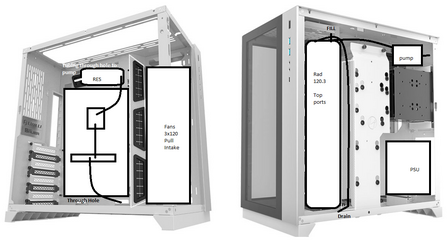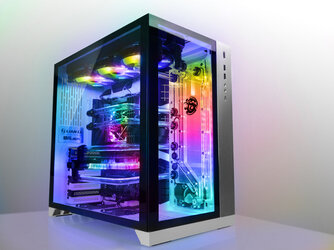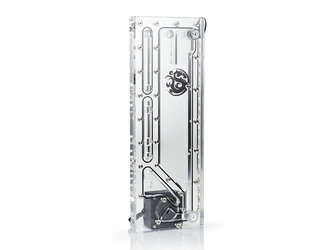- Joined
- Jun 21, 2002
Hi, this will be my first build in 14 or 15 years, also my first water build. Trying to do a lot of catching up. The last system I built (in my sig) screamed like a banshee.
For this build I would like to have a system that is near silent with a moderate OC. When I learned that CPUs are once again sold with unlocked multipliers, I realized that I had to take advantage of this and OC. I always wanted to do a custom loop, however it is expensive, and I would gladly entertain other options if they allow me to meet my goal of near silent operation with a moderate OC. I know there are some large HSF combinations as well as CLCs, but my understanding with those is you can either have quiet or OC, not both.
For general specs: Ryzen 2600x (might do the non-x and try my luck with OC, but the guarantee of binned speed is appealing) and GeForce 1070. I don't have any peripherals right now, and I'm not going to be purchasing a 4k monitor anytime soon, so this should be more than adequate. I'm planning to have the GPU on water because afaik they tend to be loud (if an ASUS strix or other "quiet" GPU would meet my goals I would be glad to leave it on air and avoid unnecessary complexity on my first loop).
How much radiator (thickness, etc) will be required? Would 120.3 be enough or does the GPU need its own 120.2? Could I get away with using 2 blocks 2 rads on one loop? Is 140 substantially better than 120, either in terms of noise or performance? I've been looking at the EK kits as a starting point, and they also seem to sell plenty of GPU blocks. Once I figure out what my radiator needs are, I will settle on a case, though I find the NZXT H440 appealing.
Any tips or suggestions would be greatly appreciated. Thanks!
For this build I would like to have a system that is near silent with a moderate OC. When I learned that CPUs are once again sold with unlocked multipliers, I realized that I had to take advantage of this and OC. I always wanted to do a custom loop, however it is expensive, and I would gladly entertain other options if they allow me to meet my goal of near silent operation with a moderate OC. I know there are some large HSF combinations as well as CLCs, but my understanding with those is you can either have quiet or OC, not both.
For general specs: Ryzen 2600x (might do the non-x and try my luck with OC, but the guarantee of binned speed is appealing) and GeForce 1070. I don't have any peripherals right now, and I'm not going to be purchasing a 4k monitor anytime soon, so this should be more than adequate. I'm planning to have the GPU on water because afaik they tend to be loud (if an ASUS strix or other "quiet" GPU would meet my goals I would be glad to leave it on air and avoid unnecessary complexity on my first loop).
How much radiator (thickness, etc) will be required? Would 120.3 be enough or does the GPU need its own 120.2? Could I get away with using 2 blocks 2 rads on one loop? Is 140 substantially better than 120, either in terms of noise or performance? I've been looking at the EK kits as a starting point, and they also seem to sell plenty of GPU blocks. Once I figure out what my radiator needs are, I will settle on a case, though I find the NZXT H440 appealing.
Any tips or suggestions would be greatly appreciated. Thanks!
 So far what does that total to, to give us an idea where you're at on the budget. Dependent where you're at, I might upgrade the CPU to the 2600X for overclocking capabilities and the screen to a 1080p 144hz Gsync (That's if you want a smooth gaming experience).
So far what does that total to, to give us an idea where you're at on the budget. Dependent where you're at, I might upgrade the CPU to the 2600X for overclocking capabilities and the screen to a 1080p 144hz Gsync (That's if you want a smooth gaming experience).

